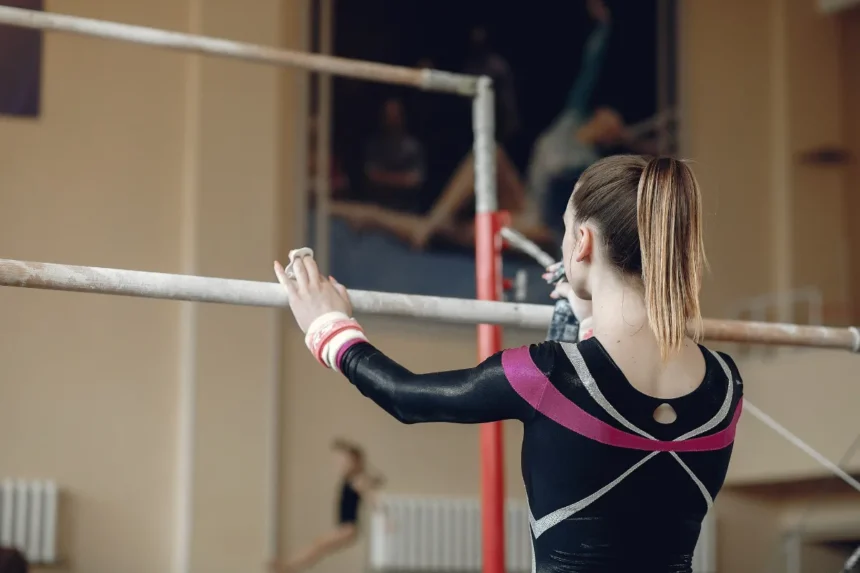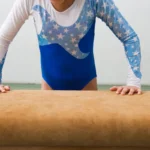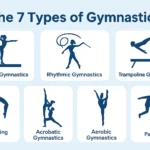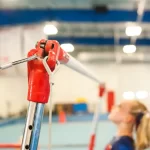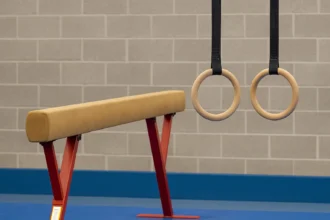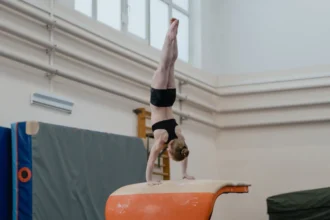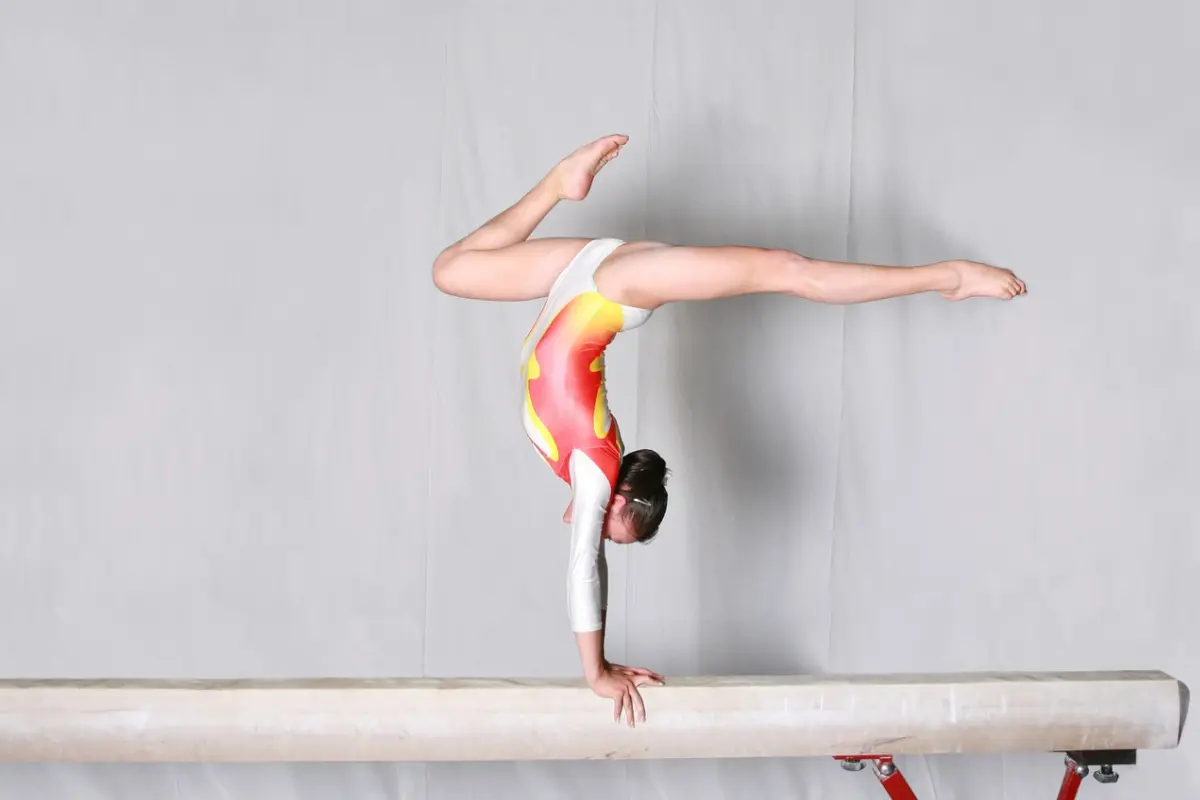If you’ve ever watched a gymnastics competition, you might have noticed something curious before an athlete begins their uneven bars routine: chalk dust in the air, a spray bottle in hand, and sometimes even a coach rubbing something onto the bars.
It’s not just a quirky pre-performance ritual. It’s science, safety, and strategy all rolled into one.
But what exactly are gymnasts spraying on the uneven bars, and why is it so important? Let’s break it down.
It’s All About Grip — and Safety
The uneven bars demand a precise balance of grip and slip. Gymnasts perform high-speed, high-impact skills: from soaring release moves like the Jaeger, to endless giants, to powerful dismounts.
- If the bars are too slippery – The gymnast risks losing their grip and flying off mid-skill.
- If the bars are too sticky – They can get hung up during a swing, mistime a skill, or strain their wrists and shoulders.
The spraying routine is part of a carefully calibrated system to create just the right amount of friction between the gymnast’s hands and the bar.
What Are They Spraying?
Most of the time, the spray is nothing fancy — plain water. But it serves an important role in activating grip-enhancing substances that gymnasts use.
Water + Chalk + Grips = Optimal Traction
- Chalk (magnesium carbonate) absorbs moisture from sweat and reduces slipperiness.
- Leather grips — specialized hand gear with small dowels — hook over the bar for better hold and wrist protection.
- When a gymnast sprays a little water on the bar first, the chalk adheres better to both the bar and the grips, forming a tackier, more reliable surface.
Why Water Helps Set the Chalk
Without moisture, chalk can stay dusty and loose, easily blowing off mid-routine.
A damp bar helps the chalk bind to the leather grips and wood surface, ensuring consistent grip through swings, transitions, and releases.
Personalized Bar Prep
Every gymnast has their own ideal bar feel:
- Some prefer a drier, slicker bar for faster swings.
- Others want a stickier surface to feel secure during big releases.
The amount of water sprayed, and exactly where it’s applied, is part of each gymnast’s personal routine.
Between Routines: Why All the Adjusting?
In competitions, gymnasts share the same set of uneven bars. Between routines, you might see:
- Spraying water
- Scraping off excess chalk with a bar brush
- Reapplying chalk and adjusting moisture
This isn’t stalling — it’s essential preparation. Bars must be reset not only for height and spacing, but also for grip conditions.
Even subtle factors like humidity, temperature, and how broken-in the grips are can influence how much water or chalk is needed. Skilled gymnasts adjust on the spot to get the perfect feel for their routine.
The Full Bar Routine: Water, Chalk… and Honey?
While water and chalk are the most common prep tools, some gymnasts take things a step further during training by adding honey or even light syrup.
It might sound like a baking recipe, but in gymnastics, it’s a time-tested grip enhancer.
Here’s how it works:
- A thin layer of honey is applied to the grips or directly on the bar.
- Chalk is packed on top, forming a sticky-chalky combo.
- The result is a tackier grip, reducing the chance of slipping during high-speed swings or releases.
This method is especially popular in practice, where athletes have full control over bar conditions and don’t need to worry about sharing equipment.
Note: In formal competitions, honey is usually discouraged or banned, since bar crews must provide a neutral, clean surface for all competitors.
Step-by-Step: How Gymnasts Prep the Bars
- Spray the bar lightly with water.
- Rub or spread the moisture evenly across the gripping areas.
- Apply chalk — either loose or packed — to stick to the damp surface.
- Test swings to feel the grip and make final adjustments.
This entire process usually takes less than a minute, but it can make the difference between a confident, clean routine and a costly mistake.
In a sport where a fraction of a second or a centimeter of slip can change the outcome, that preparation is every bit as important as the skills that follow.
